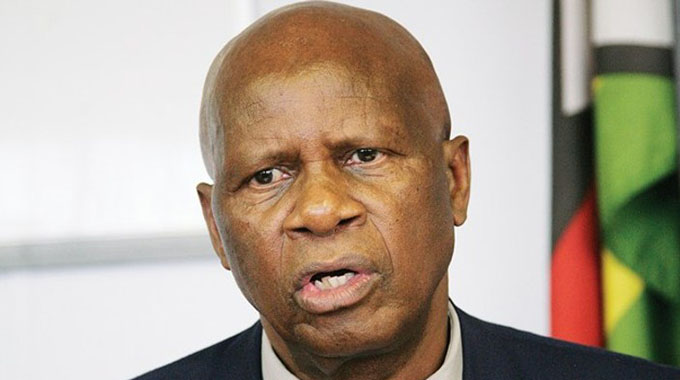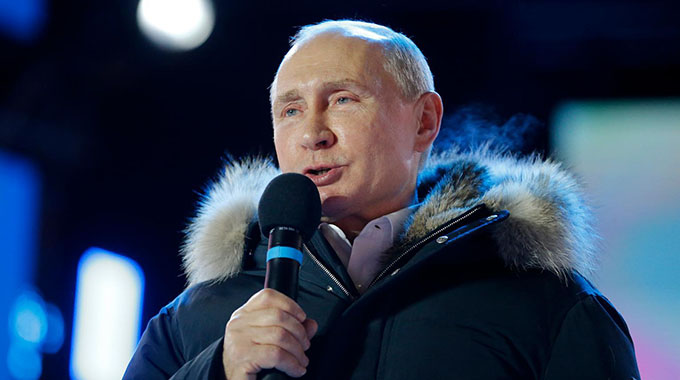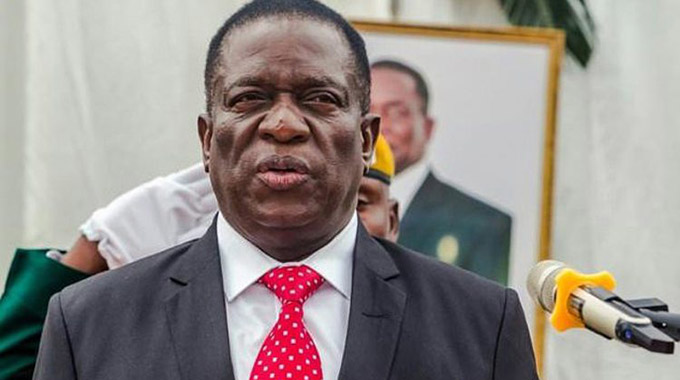In search of the old normal — Part 3

Tichaona Zindoga Political Editor
Quite fortuitously, the writing of this third instalment is taking place on the day when dates for Zimbabwean elections in 2018 have been announced. This is a huge announcement and one that has deservedly made world news.
Elections in Zimbabwe will complete an historic transition following last November’s removal of long-serving President Robert Mugabe from power.
The interregnum has been characterised by attempts to re-imagine, re-model and reconstruct Zimbabwe, but it is clear the real work will only take place after at least July 30, 2018, when someone emerges the first elected leader after Mugabe.
For this series of articles, the elections are important in so far as they hopefully will solve a long-standing political question, legitimacy and acceptance by the international community and hopefully power other cogs of national life.
It is little doubt, then, that politics is considered the “master science” – a truism often attributed to Greek philosopher Aristotle in his “Nicomachean Ethics” where he determines the “master science of the good” . . . that benefits the state, not the personal.
This framing of politics fits nicely into the present narrative that resolving the Zimbabwean politics – assumed to be the master science – will be the highest good for the benefit of the State.
Elections thus become critical.
Restoration of economic confidence
This instalment deals with the question of the restoration of economic confidence in Zimbabwe. Its fundamental assumption is that if the political question is resolved, then the economic question can also be resolved, not only because political resolution brings with it legitimacy, acceptance and by and large peace; but also because the nature of politics – the winning politics – gives character and form to economic policy.
This article will seek to ask what economic philosophy or set of philosophies will Zimbabwe adopt under the new dispensation and how this will in turn affect policy. What effect will these have on investors, banks and public?
It can be argued that since 1980, Zimbabwe has had about five economic models – or experiments – employed at various stages, and quite notably, they were informed by the politics of the day.
There were the socialism years of early Independence, characterised by the State ownership of the means of production, distribution and exchange which the new black Government predicated on the idea of gutsaruzhinji. No doubt the policy was derived from the East, where Zimbabwe got its ideological and material support.
What followed in the 1990s was the model of structural adjustment or economic liberalism prescribed by the International Monetary Fund (IMF) and World Bank (WB), requiring governments to undertake policy reforms intended to stimulate the supply side and improve the public and national finances (McLean and McMillan, 2009).
This programme was popularly (infamously rather) known as Economic and Structural Adjustment Programme (Esap).
By 1997, Zimbabwe had abandoned the programme and in came a period of policy uncertainty – one would argue – that was only to be succeeded by the Look East Policy, which Government adopted around 2003 in response to isolation and sanctions by the West following the land reform programme. The Look East Policy was supposed to seek partnerships with the East, mainly China and Russia, as ideological inspirations and business models.
The Look East Policy was also to be complemented by the more inward-looking indigenisation model, which emphasised black ownership of the means of production and equity in major companies.
Foreign companies of a certain threshold had to cede 51 percent majority ownership to locals while there would be “reserved sectors” for locals.
Indigenisation was to industry what land reform had been to agriculture.
In the period between 2013 to the present, there have been attempts to go back to the IMF/World Bank, whose main proponents are Finance Minister Patrick Chinamasa and Reserve Bank of Zimbabwe Governor Dr John Mangudya. Remarkably, this policy thrust appears tentative and was even a source of controversy a few moons back, under the Presidency of Mugabe.
Post-conflict and reconstruction
The theoretical assumption of this series is that Zimbabwe is a “post-conflict” State that needs reconstruction in the fashion of (hyperbolically speaking) countries that have previously been ravaged by war.
In fact, Zimbabwe’s unique position, having suffered economic ravages such as the 2006-2008 hyperinflation, which was never experienced outside a war zone; the subsequent loss of national currency and the general collapse of the economy means that a new template ought to apply.
The United Nations Development Programme (UNDP)’s “Crisis Prevention and Recovery Report 2008” notes that; “One of the most daunting challenges facing countries in post-conflict recovery is designing and implementing a macroeconomic policy regime that is appropriate to their particular circumstances.”
It notes that the implication of the structural, institutional and social capital damage brought by conflict is that repair will take time and recovery must be an incremental process thus challenging policymakers to rank “multiple high-order priorities and build on the early dividends and the promise of peace to convince domestic and external actors to engage and invest”.
“Such an approach will increase the likelihood of economic recovery as a self-fulfilling prophecy.
“The special challenge for post-conflict macroeconomic policy then is to kick-start the engine of economic activity, stoke it continuously without choking it off and create an enabling environment for long-term change based on a cumulative strengthening of the indigenous drivers of economic recovery,” says the report.
Governments must create an environment that fosters investment (including Foreign Direct Investment) and trade — particularly exports. Governments must also eliminate security, political and business risks; widespread corruption, cumbersome or inefficient legal and regulatory systems and mend destroyed infrastructure while ensuring human capital development and sound financial returns on business. In terms of policy making, the report notes that “most successful growth recovery countries have implemented reforms early on, yet with a gradualist and sequential approach.”
Overall, there should also be room for the participation of civil society and external development and funding (and debt-relief) partners.
East, West or the Zimbabwean Tiger?
It is no doubt that Zimbabwe, at present, is experiencing something between policy uncertainty and complete paralysis.
Nobody will say for certain whether the country is going East or West, symbolically or otherwise – or anywhere at all – which is why the election will be important to flesh out and bounce off new economic policy.
Zimbabwe needs a model, hopefully one that can be both popular and sustainable. Will it be the free-market model, the Beijing model or will Zimbabwe take after the so-called Asian Tigers?
A brief analysis of the policies and efforts of Finance Minister Chinamasa (and opposition MDC’s policies) will suggest that he is trying to get Zimbabwe onto the path of the free-market model, which Shirley (2014) explains as “traditionally pushed by the IMF, advocating market liberalisation following a classical faith in the rationality of market actors”.
The model comes with cuts and austerity (sometimes referred to as fiscal discipline) as government seeks to spend less on social services, its own staff and thus discards some entities (privatisation).
The Beijing model, or the Beijing Consensus model, is seen as a response to the above, also known as the Washington Consensus model. The Beijing model seeks inspiration from the remarkable rise of China from the 1970s to the 1990s and has thus been seen to be attractive to developing countries.
Its main features are identified by Turin (2010). These are:(a) Innovation, whereby government must actively innovate in order to address the challenges introduced by the changing economic and social environment; (b) Pursuit of dynamic goals/Rejection of per capita GDP, which entails rejection of Western metrics of development and increased focus on measures such as quality of life and individual equity; and (c) Self-determination, as developing countries actively seek independence from outside pressure and plan their own development without having to accept the unfavourable terms of the Washington Consensus (or hegemonic powers).
Lastly, Zimbabwe could look to the Asian Tigers as a model. This refers to how Asian countries namely, Hong Kong, Singapore, South Korea and Taiwan grew exponentially since the 1960s, fuelled by exports and rapid industrialisation to become leading economies of the world as financial centres, global automobile and electronic manufacturing and information technology hubs.
Money in the bank, please!
Yet this will all be for economists to decide, including giving us a unique proposal altogether. What model and policies Government will adopt should go a long way in bringing confidence in the economy as investors flock in and pour money. Or otherwise. On the other hand, the simple demand for ordinary people – and indeed a measure of confidence in the economy – will be whether they will find money in the banks and ATMs (and have jobs to earn money). This is a challenge that any new government will have to take seriously.
The aforementioned UNDP report notes how critical it is for post-conflict situations. It says: “Rebuilding the domestic financial and banking sector to protect depositor interests and help channel resources between savers and investors has been one of the greatest challenges of post-conflict recovery . . . It is critical, therefore, to re-establish a functioning central bank – or its equivalent – as a first step towards strengthening the financial and banking sector.”







Comments